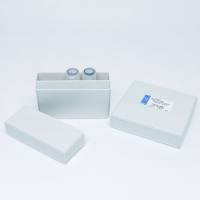Reducing Sample Complexity by RP-HPLC: Beyond the Tip of the Protein Expression Iceberg
互联网
互联网
相关产品推荐

Recombinant Human Transferrin Protein ;11096-37-0;GMP, Carrier Free, Low Endotoxin, Azide Free, ≥95%(RP-HPLC&SDS-PAGE);K20163-10mg
¥390

Recombinant Human Laminin521 E8 Protein/人源Laminin521 E8 Protein蛋白
¥300

Reducing sugar试剂盒,用于样本中还原糖含量检测,RS Assay Kit
¥369

CARD18抗体CARD18兔多抗抗体Caspase-1 inhibitor Iceberg antibody抗体CARD18 Antibody抗体
¥440

UltraBio™ Blue Native PAGE Sample Buffer,2X,阿拉丁
¥44.90
相关问答

